HISTORY - One of the earliest steam ship companies in the world ÖSTERREICHISCHER LLOYD was founded in 1833 - I 1833-55
ÖSTERREICHISCHER LLOYD,
in its corporate language Italian, LLOYD AUSTRIACO, was founded in 1833 by 19
insurance and banking companies and 127 private shareholders in Trieste after they got
the permission from the government of Austria-Hungary. ÖSTERREICHISCHER LLOYD
develped into one of the biggest shipping companies of the world. From the
start the corporate language was Italian. After WWI it became LLOYD TRIESTINO
and is stillexisting as ITALIA MARITTIMA, a subsidiary of EVERGREEN MARINE.
by Earl of Cruise
ARCIDUCA LUDOVICO of 1837 - Source: Civico Museo del Mare Trieste
In my previously
published article about AUSTRO-AMERICANA
I wrote about the naval heritage of Austria-Hungary and my special personal
interest in its shipping companies. Austria-Hungary is so far more than what I
mentioned there and forgott mentioning its most prominent citizen, Kaiserin Elisabeth,
named Sisi, empress of Austria and Apostolic Queen of Hungary.
Kaiserin Elisabeth von Österreich, Apostolic Queen of Hungary, Photograph of Elisabeth as (Erzsebet) Queen of Hungary (by Emil Rabending, 1867) - Source: Wikipedia
ÖSTERREICHISCHER LLOYD (Italian
LLOYD AUSTRIACO) was the
biggest shipping
company of Austria-Hungary and in the Mediterranean.
Seven insurance companies of Trieste initiated the founding: Banco Adriatico di
Assicurazioni, Azienda Assicuratrice, Banco Illirico d’Assicurazioni, Banco
Adriatico di Assicurazione Generali, Banco di Marittime Assicurazioni,
Compagnia degli Amici di Assicuratori and Società Orientale d’Assicurazioni. their
sample had been LLOYD’s of London. A special comitte,
among the Austrian polititian Ritter (knight) Karl Ludwig von Bruck, elaborated
the statutes. These finally got the
approval of the Bureau of the United Insurance Companies in Vienna and at least
had been approved by the government. In 1833 ultimately 19 sea transport
insurance companies, banking houses and 127 private shareholders could
constitue the company with its office in Trieste, where the only existing free
economic zones https://de.wikipedia.org/wiki/Zollfreigebiet had been. Trieste
had been the single port with a free trade zone in the Austrian part (Cisleithania) of the double monarchy Austria-Hungary.
Among the private shareholders of ÖSTERREICHISCHER LLOYD had been Karl Ludwig von Bruck the banker
Baron Pasquale Revoltella of Trieste and the founder
of GENERALI Joseph Lazarus Morpurgo.
Baron Pasquale Revoltella - Source: Wikipedia
Karl Ludwig Freiherr von Bruck, lithographie by Josef Kriehuber, 1849 - Source: Wikipedia
The purpose of ÖSTERREICHISCHER
LLOYD was initially the provision of information for the
participating insurance companies. From 1836 onwards, the mail service in the Adriatic Sea
was
also taken over, which laid the foundations for the following expansion in the
cargo and passenger area as one of the largest shipping companies in the world.
For the motto of LLOYD
AUSTRIACO, `Vorwärts´
(forward) was chosen, contrary to the then trend among the
shipping companies of the world, to use Latin formulations.
Logo of LLOYD AUSTRIACO / ÖSTERREICHISCHER LLOYD - courstsey ITALIA MARITTIMA (former LLOAD TRIESTINA / LLOYD AUSTRIACO)
The largest direct competitor was from the 1880s onwards the shipping
company ADRIA, which was operated and promoted by Hungary and was based in Fiume, part of the empire of Hungary, but was much smaller in terms of its number of ships and tonnage. In
1898, the Austrian and Hungarian governments concluded a convention on the
distribution of traffic zones between LLOYD and ADRIA ("Adria" Magyar Tengerhajózási Részvénytársaság).
This treaty seperated the companies traffic zones in West and East, where
ADRIA served Italy, Malta, France, Spain, Great Britain, North and West Africa,
except Egypt, reserved for LLOYD AUSTRIACO and North America. LLOYD AUSTRIACO
served the East, East Africa, India, China and Japan, while the Black Sea
remained neutral.
Italian was the corporate language, the brochures were also written and printed in
German, for the Levant and India East Asia lines also in French and English. There are also
Czech-speaking advertisements, For example for THALIA. The company, like
comparable shipping companies in other countries, e.g. back then COLLINS, or
CUNARD, COMPAGNIE GÉNÉRALE TRANSATLANTIQUE, has also been given high government
subsidies, which is why the company can be described as "half-state-owned"
due to various obligations from the state.
After the end of WWI,
the LLOYD AUSTRIACO passed into Italian ownership and was continued from 1921
to 2006 as LLOYD TRIESTINO (LLOYD TRIESTINO di NAVIGAZIONE). In 2006 the LLOYD TRIESTINO was renamed by its new owner EVERGREEN to ITALIA MARITTIMA.
The fleet of LLOYD
AUSTRIACO / ÖSTERREICHISCHER LLOYD in 1848 - Source: Civico Museo del Mare Trieste
Halfmodel of the steamer IMPERATORE - Source: Civico Museo del Mare Trieste
(all ships had been paddle wheele steamship, total 24)
Ship´s
name
|
built in
|
launch
|
|||||||
ARCIDUCA
FRANCESCO CARLO
|
1833
|
133
|
40
|
||||||
ARCIDUCHESSA
SOFIA
|
1833
|
141
|
50
|
||||||
MARIA
DOROTEA
|
Triest
|
1834
|
212
|
70
|
|||||
FERDINANDO
I.
|
Triest
|
1836
|
284
|
100
|
|||||
ARCIDUCA
LUDOVICO
|
1837
|
310
|
100
|
||||||
ARCIDUCA
GIONANNI
|
London
|
1837
|
349
|
120
|
|||||
PRINCIPE
METTERNICH
|
Triest
|
1837
|
473
|
140
|
|||||
CONTE
MITTROWSKI
|
Triest
|
1837
|
237
|
60
|
|||||
ElLLENO (ex PRINCIPE
METTERNICH)
|
Triest
|
1837
|
357
|
120
|
|||||
BARON
EICHOFF
|
Triest
|
1837
|
361
|
100
|
|||||
MAHMUDIÈ
|
Triest
|
1838
|
467
|
120
|
|||||
DALMATA (ex CONTE
STÜRMER)
|
Triest
|
1838
|
211
|
60
|
|||||
STAMBUL (I)
|
Triest
|
1838
|
620
|
160
|
|||||
CONTE
STÜRMER (ex SERI PERVAS)
|
Triest
|
1839
|
469
|
140
|
|||||
BARONE
KÜBECK
|
Triest
|
1842
|
229
|
70
|
|||||
ARCHIDUCA
FEDERICO
|
1842
|
394
|
120
|
||||||
IMPERATORE
|
Triest
|
1843
|
545
|
160
|
|||||
IMPERATRICE
|
Triest
|
1844
|
545
|
160
|
|||||
CONTE
KOLOWRAT
|
Triest
|
1845
|
330
|
100
|
|||||
AUSTRIA
|
Triest
|
1847
|
763
|
360
|
|||||
TRIESTE
|
Triest
|
1847
|
448
|
160
|
|||||
VENEZIA
|
Triest
|
1847
|
448
|
160
|
|||||
ITALIA
|
Triest
|
1847
|
728
|
260
|
|||||
GERMANIA
|
Triest
|
1847
|
728
|
260
|
Steamer CALCUTTA - Source: Civico Museo del Mare Trieste
Steamer VICENZA - Source: Civico Museo del Mare Trieste
Painting of ARCIDUCA LUDOVICO - Source: Civico Museo del Mare Trieste
Steamer AUSTRIA in heavy seas - Source: Civico Museo del Mare Trieste
Model of steamer CONTE STÜRMER - Source: Civico Museo del Mare Trieste
Steamer ITALIA - Source: Civico Museo del Mare Trieste
Steamer TRIESTE - Source: Civico Museo del Mare Trieste
Model of the steamer ITALIA - Source: Civico Museo del Mare Trieste
Steamer TRIESTE - Source: Civico Museo del Mare Trieste
Lithographie of steamer TRIESTE - Source: Civico Museo del Mare Trieste
The first years of LLOYD
AUSTRIACO
LLOYD AUSTRIACO /
ÖSTERREICHISCHER LLOYD had three business sections
Section One - Insurance
and Information
The purpose of this section of LLOYD AUSTRIACO, followed the example of LLOYD´s of London, and supplied traders and ship haulers with up-to-date information on
various markets and maritime trade in Europe and Asia. The company obtained the
information from a network of various trade correspondents and newspapers,
which regularly reached the port of Trieste. In addition, shipping in the port
of Trieste was to be recorded, and on the order of the state, the
time-consuming and delays of postage were marked by the k. u. k. Kriegsmarine
sailing ships. The first directors were the following gentlemen: Bousquet, Karl
von Bruck, Brucker, Giannichesi, Grant, Kohen, Meksa, Padovani, Premuda, Carl
Regensdorff, da Costa, Sartorio, Schell and Vucetich.
Panorama of Korcula mid 19th century - own collection
Section Two - Steamshipping
In order to participate in the international freight and passenger
transport at sea, the LLOYD AUSTRIACO introduced the enterprise area on August 2nd 1836.
The ÖSTERREICHISCHE DAMPFSCHIFFAHRTSGESELLSCHAFT des ÖSTERREICHISCHEN LLOYD (AUSTRIAN STEAMSHIP COMPANY of the AUSTRIAN LLOYD /
SOCIETÀ di NAVIGAZIONE a VAPORE del LLOYD AUSTRIACO) quickly became the core
business of the entire company.
Therefore August 2nd 1836 also applies as the founding year of LLOYD
AUSTRIACO. The founding capital amounted to one million Florentine Gulden in the Austro-Hungary Convention Monetairy (Konventionsmünze). In the founding document it was stated: "The purpose of the
foundation was to bring Trieste by means of steam boats to the Echoes of the
Orient."
The Konventionsmünze
The Convention Monetary was in the reign of Maria Theresia the famous
"Maria-Theresien-Taler". Later the gulden was introduced, the name
of which is derived from the word "gülden". The term
"dollar" goes directly back to the thaler.
Until the introduction of the Kronen / crown (1892), the guilder (=
Reichsgulden) was the official means of payment in Austria. It was shaped in
gold and silver as well as with different weights. At this time the Dutch and
the Polish guilders also gained importance in Europe. For a florin, ten
kilograms of bread or two kilograms of beef were available for the turn of
the century. A guilder, by the way, was equivalent to 60 Kreuzer / cruisers.
Only with the Silbergulden were 100 cruisers equal to a guilder.
Source: Österrichisches Staatsarchiv
Up to that first Austro-Hungary wide Taler, each country in
Austria-Hungary had its own monetary system, which was disabling economic
progress. A similarity to the introduction of the Mark in Germany in 1871, or
that of the Euro in 1999, with the publishing of its coins in 2002.
Earl of Cruise
|
For the new company, three steamers of 120 hp and three steamers with 100
hp each were constructed and purchased from British shipbuilders. In Trieste,
workshops in Trieste were set up and coal storage facilities were hired in
foreign ports. The first ship, which could be delivered to LLOYD AUSTRIACO, was
the London-built ARCHIDUCA LUDOVICO. The first trip of the company, which now appears as a shipping company,
began on May 15, 1837, at 5 o'clock in the afternoon, from the Molo San Carlo
in Trieste. There were 53 passengers on board ARCHIDUCA
LUDOVICO, which was within 14 days in Constantinople via the
ports of Ancona, Corfu, Patras, Piraeus, Syra and Smyrna.
Painting of fleet parade of LLOYD AUSTRIACO steamers - Source: Civico Museo del Mare Trieste
LLOYD AUSTRIACO was not free from accidents. Shortly after the start of
business, two clashes were already happening with ships of foreign companies.
In November, 1837, the Lloyd steamboat ARCIDUCA LUDOVICO collided with the
French steamer DANTE offshore Scio and 17 days later with the French steamer
LEONIDAS in the port of Constantinople. As a cause of the clashes, rather
arbitrary acts of the established lines were adopted against the young rival,
the LLOYD ADRIACO, as a human failure. Thus Chancellor Fürst (Prince) Metternich intervened with the French government to prevent the "recurrence of
similar encounters."
Section Three - Publishing, the literary-artisticdepartment of LLOYD AUSTRIACO
Journal of
ÖSTERREICHISCHER LLOYD 1847 - Source: Wikipedia
While the 1st section was responsible for
information procurement and the 2nd section for freight and passenger traffic,
the board of the LLOYD decided in 1848 to extend its extensive journalistic
activities. Accordingly from 1849 onwards a 3rd section worked. This part of
the LLOYD, but was structured as a legally independent stock company, was part
of the LLOYD, comprising the editorial offices of the periodicals, the general
printing office, which had its own font foundry, the KUNSTANSTALT with a steel,
and a wood-stud studio as well as a photographic studio and finally the reading
rooms. The KUNSTANSTALT has published timetables, yearbooks, newspapers and
illustrated books. Thus, the official Provincial Gazette `L 'Osservatore
Trieste´, the daily newspaper `Triester Zeitung´, the popular folklore sheet `Il
Diavoletto´ from March 1851 to the 2nd of November 1918, the Greek-language
weekly `Ημερα´ (The Day) and `Il listino´, the daily list of incoming and
outgoing Ships. From the months of September 1850 to 1865, the Illustrated `Family
Book´, furnished with many steel engravings, for the maintenance and
instruction of domestic circles, which also appeared in a total of fifteen
volume volumes, were published as periodicals. Editors were the Austrian actor
and writer Ignaz Papsch (1800-1862) and
the poet Faust Pachler Pachler (1819-1892). In
Italian, there was the `Latino di Famiglia´. In addition, classical literature
as well as history, nature, shipping and geography were published, some of
which were very elaborately equipped with artistically high-quality steel
engravings. From 1854 to 1881 the Kunstanstalt, under the title of LLOYD’s Reiseführer (LLOYD's travel guide), also
published a nine-volume series of travel guides, for Trieste, Venice and the
Orient, as well as several railway lines. In early 1861, a catalog of more than
one hundred titles appeared. this broshure performed literary, artistic and
geographic works mainly in German and Italian.
With its publication activity, the 3rd section complemented and supported LLOYD's other business activities. It was not until 1928 that it was closed by LLOYD TRIESTINO, the successor of LLOYD AUSTRIACO.
With its publication activity, the 3rd section complemented and supported LLOYD's other business activities. It was not until 1928 that it was closed by LLOYD TRIESTINO, the successor of LLOYD AUSTRIACO.
Expansion period
Timeschedule from 1845 for the relations Konstantinopel–Smyrna and Konstantinopel–Galatz - Source: Wikipedia
Advertising in Illustrirte Zeitung of Februar 1848 for the steam shipping lines
By 1845 the number of journeys had quadrupled and
the number of passengers rose by twenty times. LLOYD AUSTRIACO employed 1049
employees. One of the parties responsible for the rapid growth of the company
was an agreement with the ERSTENDONAU-DAMPFSCHIFFAHRTS-GESELLSCHAFT (DDSG) (FIRST DANUBE STEAMSHIP COMPANY
(DDSG)), which planned to take a weekly flight from the Danube ports to the
Black Sea,
where passengers could transfer to the ships of LLOYD AUSTRIACO.
In 1852 the shipping on the Po and on Lago Maggiore was incorporated and reorganized. Later, lines were also set up on the river Bojana and the Skutarisee. Due to the enormous expansion of the first 15 years,
the LLOYD AUSTRIACO now had a number of ships that needed regular maintenance
and repair work. A large arsenal
for these
purposes as well as for the independent new building was needed, which was
established from 1853 in Trieste-Sant'Andrea. The solemn foundation was carried
out by Erzherzog Ferdinand Maximilian on May 30th. As an architect for
the building commissioned in 1861 on the area of 114,000 m², Hans Christian Hansen, known for his shipyard
buildings in Greece, was involved. The 3,000 employees in the LLOYD arsenal
were an enormous economic factor for Trieste. In addition to large workshops,
the arsenal included a dry dock and a 241 meter long Helling (slip) for new ships. In 1865
the first steamboat AUSTRIA, built entirely of iron and domestic materials, was
launched in this arsenal. With 1,700 tons, then the largest ship of the
shipping company.
LLOYD-Arsenal, from: LLOYD’s Reisehandbuch Triest (1857) - Source: Wikipedia
LLOYD-Arsenal in Trieste seen offshore (~
1900) - Source: Wikipedia
In 1855, ÖSTERREICHISCHER LLOYD / LLOYD AUSTRIACO received for the first
time aid from the state. However, this included various duties, such as the
maintenance of certain lines in the Orient, as well as the introduction of new
lines and mail services. In addition, ships from now on could only be built
abroad in exceptional cases. In the war against Italy in 1866, the LLOYD had,
according to treaties with the state, to give several steamers to the k. u. k. Kriegsmarine, the navy of Austria-Hungary. And was also required to carry out squad
transports. Shuttled ships, such as the EGITTO at Lissa, which would have been
replaced.
HISTORY - AUSTRO-AMERICANA the Austro-Hungary shipping into the new world
HISTORY - One of the earliest shipping companies in the world ÖSTERREICHISCHER LLOYD was founded in 1833 - II 1855-1914
HISTORY - One of the earliest steam ship companies in the world ÖSTERREICHISCHER LLOYD was founded in 1833 - III 1914-19 becoming LLOYD TRIESTINO
HISTORY - One of the earliest shipping companies in the world ÖSTERREICHISCHER LLOYD was founded in 1833 - II 1855-1914
HISTORY - One of the earliest steam ship companies in the world ÖSTERREICHISCHER LLOYD was founded in 1833 - III 1914-19 becoming LLOYD TRIESTINO






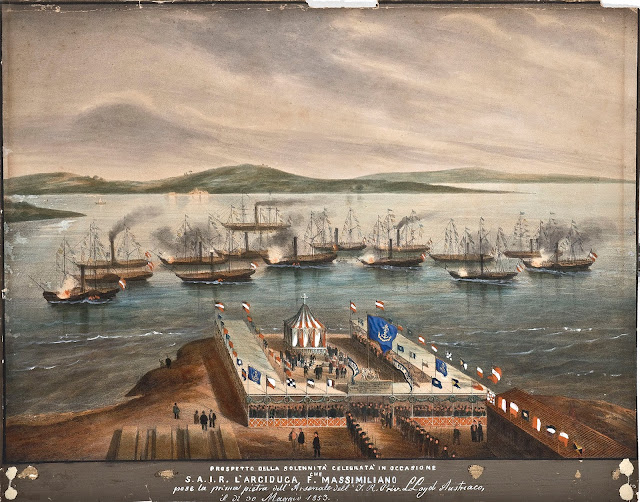

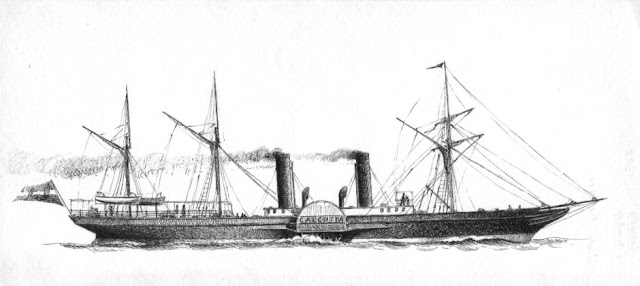
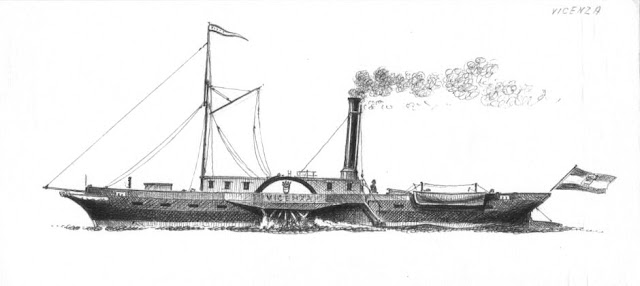


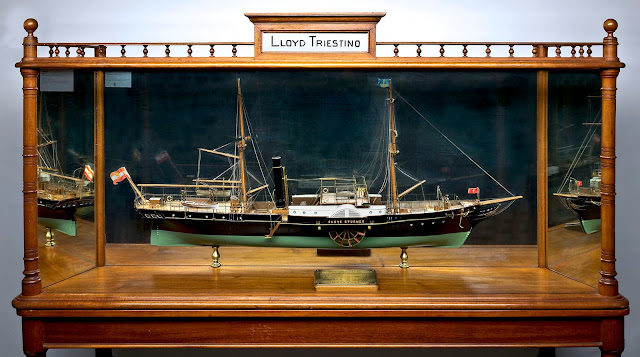


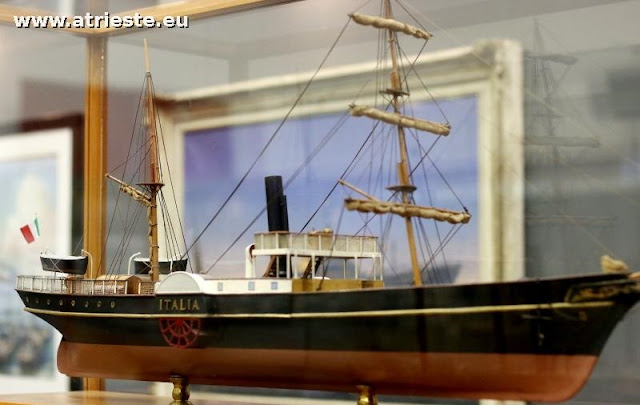
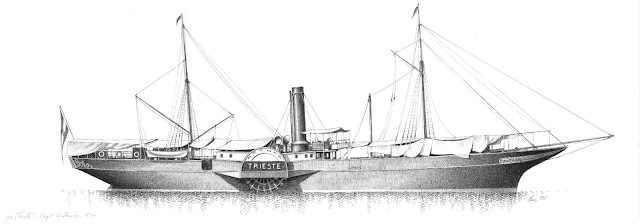








Comments
Post a Comment